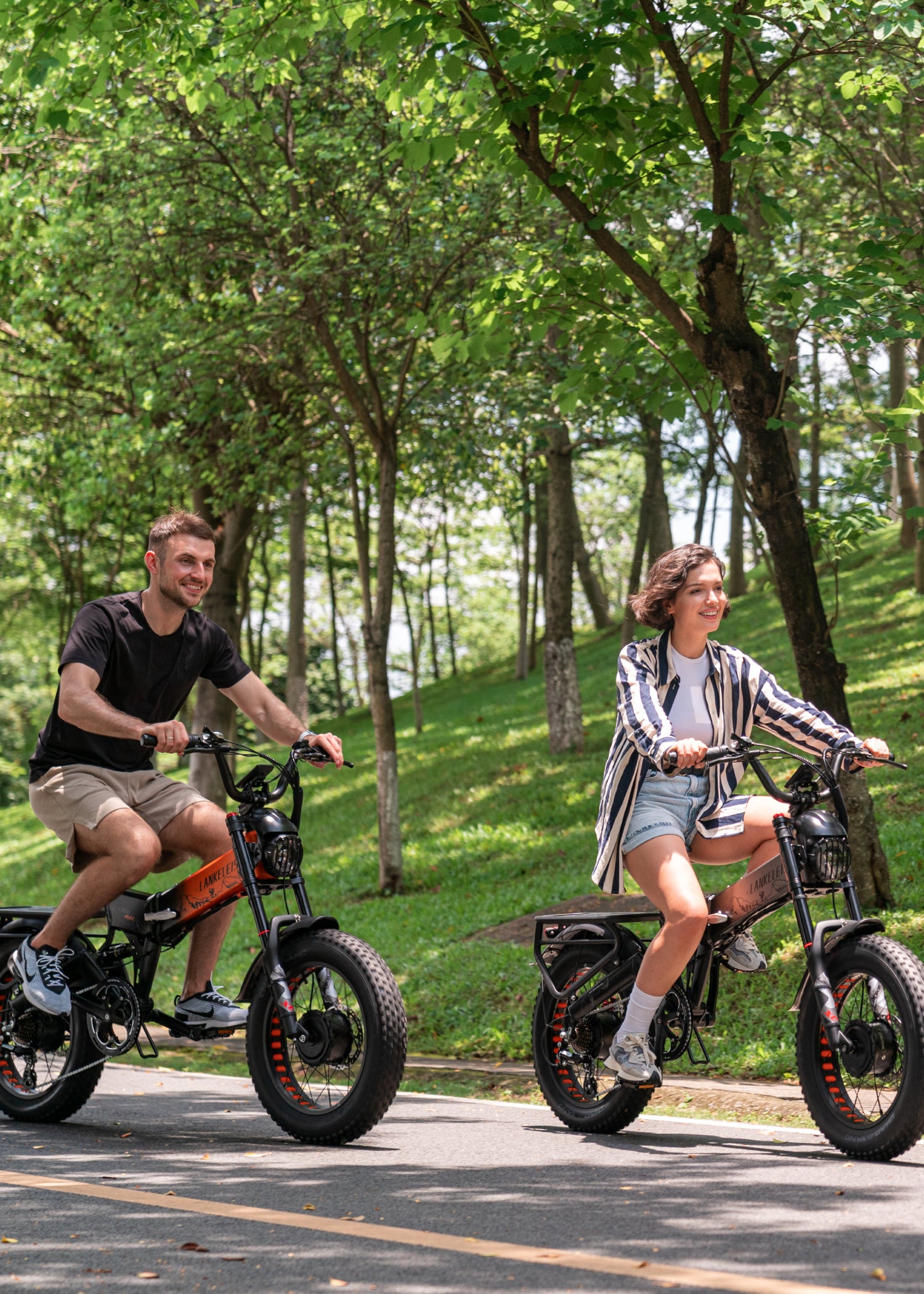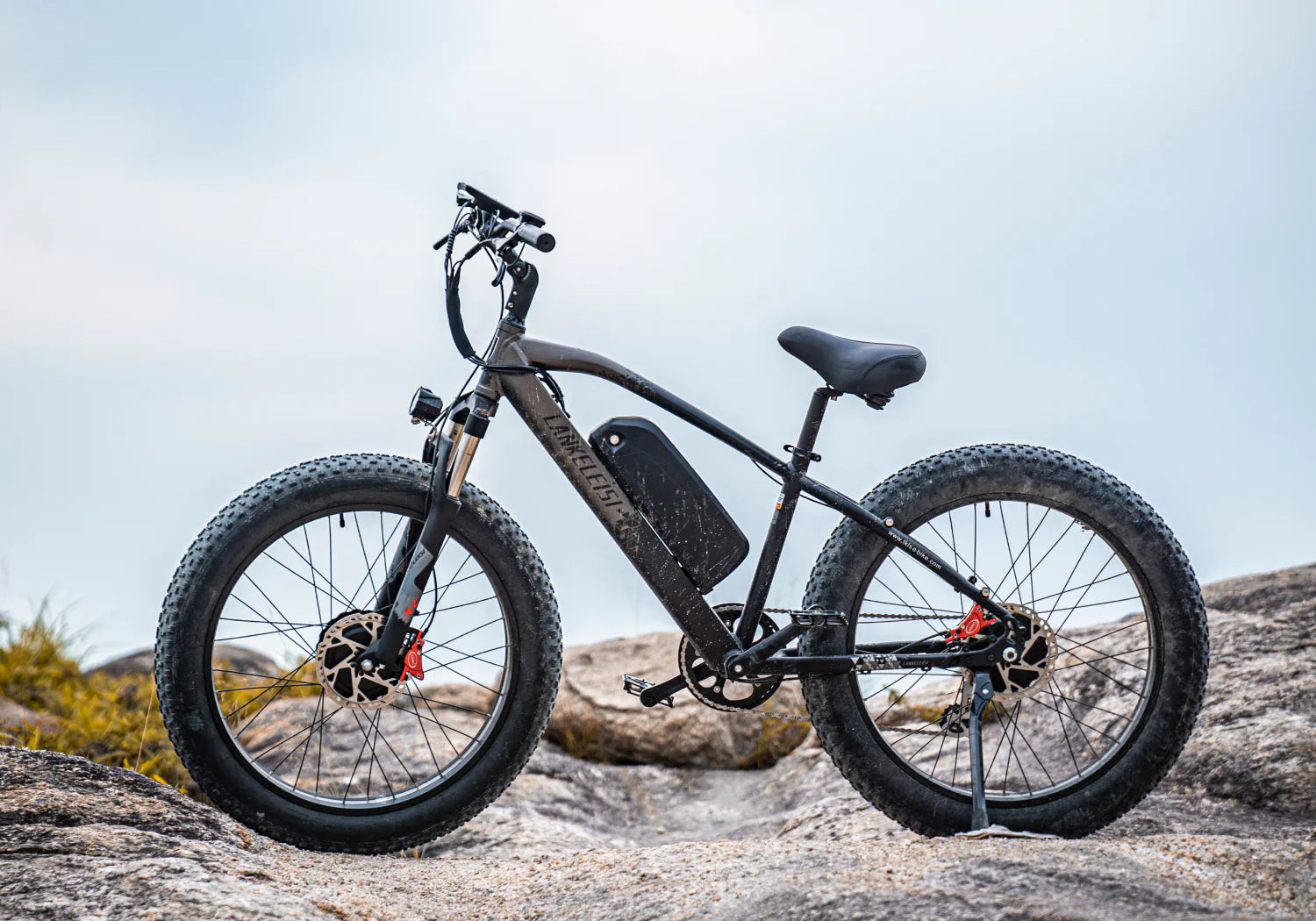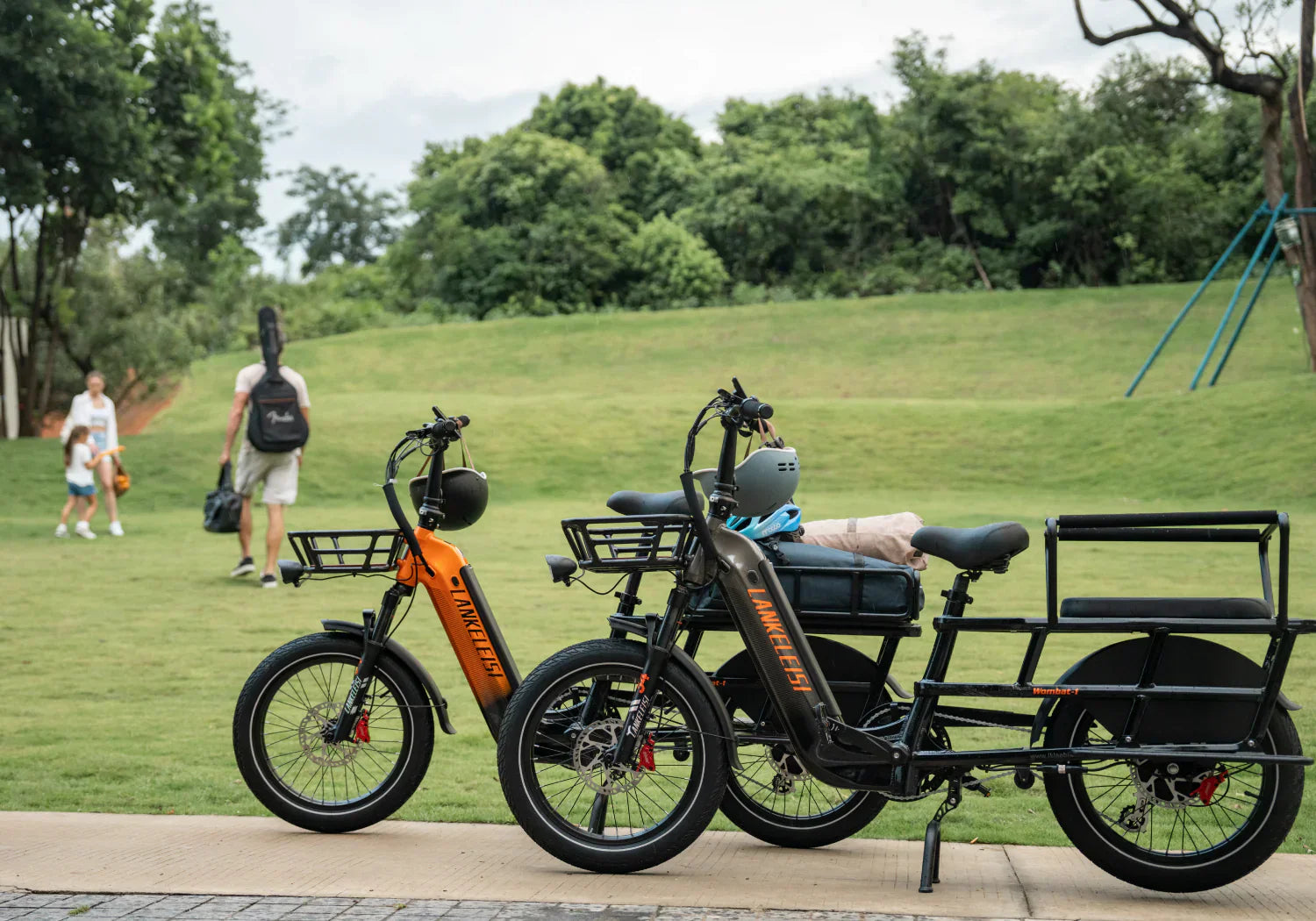Considering buying a hardtail electric mountain bike , but unsure of its benefits and limitations? Equipped with front suspension and a rigid rear frame, this bike offers an attractive balance between performance, price, and versatility.
This article will detail the pros and cons of hardtail mountain bikes and compare them to full suspension electric mountain bikes .
Plus, you'll find buying tips and real-life use cases to help you decide if this is the right product for your needs.
What is a hardtail mountain bike?
Hardtail mountain bikes are primarily known for their hybrid design, which features front suspension (suspension fork) but a rigid frame at the rear. This configuration places them somewhere between a full-suspension mountain bike (front and rear suspension) and a rigid mountain bike (without suspension). A hardtail mountain bike has no rear suspension, only a suspension fork. They are therefore cheaper to produce and easier to maintain.
Additionally, hardtail mountain bikes are easier to ride than full-suspension e-MTBs and are ideal for beginners. Since hardtails lack rear suspension, they only have a shock-absorbing front fork. They are therefore cheaper to produce and easier to maintain.
Why talk about semi-rigidity?
- Front suspension only: the front fork absorbs the impact of obstacles (roots, rocks), while the rear remains fixed.
- Reinforced frame: the absence of a rear shock absorber reduces weight and simplifies mechanics, making it ideal for less technical terrain.
- Electric Bike Motor : On a hardtail electric mountain bike, the motor is usually located in the pedals, where it is mostly integrated with the e-bike battery , so as not to make the mountain bike too heavy.

What are the advantages of a hardtail mountain bike?
Hardtail mountain bikes (MTBs) have no rear suspension and their technical features are suitable for a variety of uses. Their main advantages are:
Optimized for lightness and maneuverability
The lack of a rear shock system means the bike's weight is reduced, making it easier to perform technical maneuvers uphill or on narrow trails. This lightness also makes it easier to transport when traveling.
Efficient power transmission
The robust frame guarantees excellent pedal-to-wheel energy transmission, minimizing losses during acceleration or climbing. If you're a cyclist looking for an immediate response, its advantages will become your first choice.
Simple and economical maintenance
The mechanical structure is less complex (no rear suspension or articulated linkage), which means lower maintenance costs. It is easy to install and repair, even for inexperienced riders.
Wide range of applications
Hardtail mountain bikes are ideal for mixed routes, such as city riding, forest trails, and moderately technical trails, as well as for everyday commuting and casual outings in nature. Its balance between performance and comfort is appreciated by more and more cycling enthusiasts.

Very competitive price-quality ratio
Due to their simplified design, hardtail mountain bikes are often available at a lower purchase price than full suspension mountain bikes without compromising durability or performance on different terrains.
Hardtail mountain bikes combine efficiency, practicality, and ease of use. You can decide if this model is right for you based on your needs and the benefits of hardtail mountain bikes.
What are the disadvantages of hardtail mountain bikes?
Hardtail mountain bikes are attractive because of their versatility and affordability, but they are very limiting for serious riders looking to tackle technical terrain.
Therefore, you need to understand the disadvantages of hardtail mountain bikes so you can make the right choice. Here is a detailed analysis of the main drawbacks:
Reduced comfort on rough terrain
Since it lacks rear suspension, on gravel roads, overhanging tree roots or fast descents, the rigid frame transfers shock directly to the rider, causing fatigue and discomfort.
Additionally, full-suspension mountain bikes absorb up to 80% of vibrations, while hardtail mountain bikes only absorb 40-50%. If you want to solve this problem, you can increase your tire pressure or opt for a suspension seat, which can partially alleviate the problem but is not the equivalent of true rear suspension.
Limited performance in extreme conditions
Grip and stability: On very technical trails, with steep slopes, loose rocks, etc., a rigid rear can lead to a loss of traction and less precise control. When going downhill, if the terrain is uneven, the weight of the engine will increase the imbalance due to its central position.
Motorization limitations: A rear-wheel motor would overload the rigid frame, reducing efficiency on steep climbs.
Battery life and charging time
On hilly terrain, the 500 Wh battery of the electric bike offers a range of 40 to 60 km, while the declared range in optimal conditions is 80 km.
Long charging time: A full charge takes 4-6 hours, which is a bit limiting for long journeys.
What is the difference with a full suspension mountain bike?
When comparing hardtail and full-suspension mountain bikes, the main differences lie in the frame design and the presence of suspension. Hardtail mountain bikes have only front suspension, while full-suspension mountain bikes have front suspension and rear shocks. This difference directly affects the bike's performance, comfort, and usability.

Suspension and comfort
Full-suspension mountain bikes offer greater comfort and optimized shock absorption. Thanks to the rear shock absorber, it significantly reduces the impact of obstacles such as rocks, tree roots, and technical descents. This allows the rider to maintain better control on rough terrain and reduces muscle fatigue, especially during long rides.
On the other hand, a hardtail mountain bike transmits more vibrations from the terrain to the rider. It is therefore better suited to less uneven roads and routes that require higher pedaling efficiency.
Performance and efficiency
The lack of rear suspension on a hardtail mountain bike prevents energy from being dissipated while pedaling, thus optimizing propulsion, especially when climbing. This makes it perfect for off-road racing and hilly terrain.
In contrast, full-suspension mountain bikes can absorb rough terrain, providing better traction and control on technical descents or rough trails.
Weight and maintenance
Full-suspension mountain bikes are heavier due to their rear shock systems and reinforced frames. They also require regular maintenance, especially the pivots and rear shocks, which require regular adjustments and repairs.
In contrast, hardtail mountain bikes are simpler and require regular maintenance. Their sturdy frame and lack of rear suspension reduce the risk of mechanical failure, making them a popular choice for their reliability and durability.
When comparing hardtail and full-suspension mountain bikes, the main differences lie in the frame design and the presence of suspension. Hardtail mountain bikes have only front suspension, while full-suspension mountain bikes have front suspension and rear shocks. This difference directly affects the bike's performance, comfort, and usability.
Which mountain bike to choose: full suspension or hardtail?
Both full-suspension and hardtail mountain bikes have their own advantages. The choice depends on your needs. You can make a choice based on your needs, your goal, the terrain, and your budget.

If you are looking for the following conditions, it is recommended to choose a hardtail mountain bike:
- It is more effective uphill and on dry terrain.
- A lighter and more maneuverable electric bike.
- Since there is no rear shock absorber, mechanical maintenance is less.
- Compared with the same series of full suspension systems, the price is more affordable.
If you are looking for the following needs, it is recommended to choose a full suspension mountain bike:
- Long journeys are more comfortable and less tiring.
- Better grip and downhill control.
- Smoother ride on technical and rough terrain.
- The suspension can compensate for road irregularities, resulting in better traction.
Buying guide: Choosing your hardtail mountain bike
If you're looking for a high-performance hardtail mountain bike, here are three models from LANKELEISI to consider:
LANKELEISI GOLF-X : A robust and versatile model, perfect for long-distance tours and mixed terrain.
LANKELEISI MG740PLUS : A powerful hardtail electric mountain bike that offers efficient assistance and handles climbs with ease.
LANKELEISI XC4000 : the perfect balance between lightness, performance and price, ideal for off-road and sporty outings.
To summarize
If you prefer versatility and a reasonable budget, then a hardtail electric mountain bike would be a good choice. It's perfect for forest trails, mixed terrain, or moderate slopes, and its responsiveness and range are exceptional.
FAQ
Can it replace a full suspension mountain bike?
As long as your riding doesn't involve extreme terrain, a hardtail mountain bike can be a good replacement for a full-suspension bike. If the terrain is rough and the slopes steep, a full-suspension mountain bike can provide comfort and stability.
What type of bike suspension is best?
It all depends on your use. Choose a hardtail electric mountain bike for versatility or a full-suspension electric mountain bike for technical performance.
Which is better, gravel biking or mountain biking?
Gravel bikes are ideal for hilly roads and trails, offering speed and comfort over long distances. Mountain bikes are better suited to rough terrain thanks to their suspension and improved grip.
What type of mountain bike for long distance?
For long distances, a hardtail mountain bike is recommended because it's lightweight and offers the best performance. For a more comfortable experience on technical terrain, a full-suspension mountain bike with good travel is preferable.







